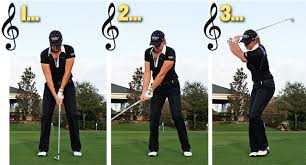I write these blogs based on interesting golf insights that may affect your game as well as mine. This week I watched a training clip by Quintin on Top Speed Golf that reminded me of a match that I played where all of my iron shots were in perfect control for direction and distance. Why did this happen? I took a divot after impact with the ball on most of my shots.
Like most recreational golfers, I typically make a perfect practice swing for my iron, pitch or chip shots. Then I proceed to put a little more oomph and power into my actual shot before my hips start to rotate. Yes, I rush my shot from the top of my swing without giving enough time for my weight transfer to my leading foot. I often that I rush my swing with my arms while my weight is still on my tailing foot.

The lesson that I watched focused on “Why we Chunk Chips“. It’s also the same reason why we mishit our iron shots.
1/ It’s easy to make a practice swing for a Chip Shot. You don’t need a lot of power so we easily swing to bottom out our swing exactly where the ball is resting or beyond that location.
2/ Then we move up our ball, take a look at our target and start to think about the last chucked chip shot that we made. The body tightens and we turn into a robot.
3/ In our backswing, we limit our hip and spine rotation as we tend to shift the trunk of our body about 2 or 3 inches sideways to create a little more power with a slightly faster backswing and downswing.
4/ Unfortunately we never recover from the side-sway in our backswing. We then bottom out the swing 3 inches before the ball or we blade it like a bullet across the green.
Solution: DON’T SHIFT YOUR BODY SIDEWAYS IN YOUR BACKSWING.
–Keep your head directly over your ball as your shoulders and hips ROTATE [Not Shift].
- –Your leading knee doesn’t straighten, it turns with your body rotation and points more to your trailing knee.
- -Stand up right now in a golfer’s stance and cross your arms over your chest and rotate (or coil) WITHOUT SHIFTING SIDEWAYS.
- -Do this about 20 times and then complete the same rotation while swinging your wedge. Your club face will ground-out at or just after the ball. No more chunking.
Now practice the same swing with all of your irons using your GOLFSTR+ AND A STRAIGHT LEADING ARM. Make sure that you take a slight divot after your ball. Buy one today at www.GOLFSTR.com
Golf Truism #35: The rough will be mowed tomorrow.




